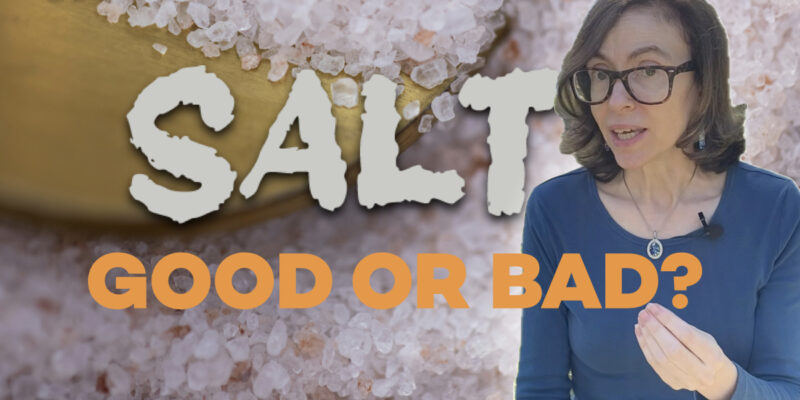If you're a health professional you should know that you can't implicitly trust medical news outlets. They may be manipulating you!

Are Toxins Affecting Sexual Organ Size?
Table of Contents
6 Minute Read
Article topics:
- The book Countdown, by Shanna Swain, makes some shocking claims about human genitalia and the future of the human race
- My observations from 30 years in practice
- The link between toxins in vegetable oil and altered sexual development
- Why does size matter, biologically?
Authors: Luke Shanahan, Cate Shanahan, MD
Don’t you love Erin Brockovich?
She’s the one who took PG&E of California to task for poisoning the water supply of Hinkely, CA with chromium effluent from improperly disposed industrial waste. She’s a hero. Someone ought to make a movie about her.
This article is continued below...(scroll down)
Well, she’s just written an article for the Guardian I think everyone is going to be talking about. In it she spotlights a book that’s just come out called Countdown, penned by renewed reproductive epidemiologist, Shanna Swan, that argues convincingly that the toxins children are now exposed to in utero and as growing children are having a concerning effect on the development of their genitalia.
Countdown points to alterations in “penis size and volume of the testes.”
I want to challenge you here to take a guess as to the nature of these alterations. Really think about this, as if there is money at stake: if these phthalates and other “forever chemicals” now found in everything from children’s toys to shrink wrap to wild fish is making a little boys package bigger or smaller?
I exposed a hint in the language of the question for all to see. If you guessed smaller, ding ding-ding-a-ling! You guessed right.
Here’s why you guessed right. We’re talking about something called sexual dimorphism. All that means is how boys and girls are different, which is something of great debate as of late. If you guessed right, and I would think 99% of you probably did, it’s because you know instinctively that order is harder to create than chaos. Sexual dimorphism represents order while, in contrast, loss of sexual dimorphism is a result of disruptions that occur to normal development that bring chaos into the normal orderly biological systems. It comes from static fed into the communication channels between your body and the hormones that direct its growth. That static is coming from toxin exposure.

In her book, Dr. Swan calls attention to evidence that toxic chemicals that threaten humanity’s ability to reproduce, including:
- Sperm counts have decreased nearly 60% since the early 70s
- The average twenty-something woman today is less fertile than her grandmother was at 35
- Toxins that reduce penis size and testicular volume are playing a role in the unprecedented rates of infertility
- Chemical exposure correlates with altered gender identity in girls and boys
It’s no joke. This is life changing stuff. I’m not in a position to talk about the larger societal impact of millions of children being born with bodies that don’t look very much like their great-great-great grandparent’s did. But I can tell you about my own 30-year clinical experience as a medical doctor.
How Doctors Measure Testicular Size
Believe it or not, part of what happens during a well-child checkup involves a doctor assessing development by numerically estimating testicular volume (we’re talking about boys, here). Physicians assess this as they examine each testicle looking for abnormal lumps, hernias and other abnormalities. There’s a thing called an orchiometer, which looks like a necklace with different size olive-shaped beads strung together, that’s used to assign a numerical volume to the testicle in question.

When I read about Shanna Swan in her book saying that, when it comes to sexual dimorphism among the younger generation, it’s a whole new ball game, I can say in all honesty that this jives with what I’ve seen in clinic. The normal adult size on an orchiometer is 25, and I’ve not seen anything much above an 18 for decades.
But there was one. He was Russian, six foot two, started out on breast milk and then grew up eating real food and home cooked meals.
In other words, he wasn’t exposed to the barrage of toxins that most children today endure. You see, I agree 100 percent with Erin Brockovich and Shanna Swan and I’m glad to see that this book is getting the publicity it deserves. But if we’re willing to talk about the toxins in our sippy cups, I hope we will get to the point where we can talk about to the cell-killing, DNA-mutating compounds in vegetable oil and foods cooked in vegetable oil including those at hoity toity grocery stores and high-end restaurants.
Why Size Matters, Biologically
Testicular size is an established indicator of sexual maturity. We’ve recently learned that failure to reach full adult size is an indicator of poor reproductive fitness and a strong predictor of both reduced number of sperm and poor sperm quality, meaning ability to swim fast and whether or not they look normal. The adaptive benefit to this when it comes to producing more offspring is obvious. Further, there is some evidence that less healthy sperm, when they do manage to fertilize and egg, do not communicate the genetic information that healthier sperm do, leading to less optimal pregnancy outcomes.
And studies have shown that men with significantly smaller than average sex organs have higher rates of depression and suicide. It’s hard enough to navigate through the dating world with this medically recognized condition, known as micropenis, but we add insult to injury when we insist that their dating difficulties are due to a lack of confidence or charm or some other character defect. Politically “correct” assurances aside, more and more men will be dying due to physiologic shortcomings.
On a final note, I think this trend towards disrupted physiologic development doesn’t end with the sexual organs. Although I have not seen a lot of studies on this, just having been alive for over half a century I see a distinct difference between the musculoskeletal development of young adult men today as compared to the 1970s, when I was growing up. What I’m seeing, and you will too if you look, is a narrowing of faces, shrinking of the lower jaw, sloping shoulders, hunched upper backs, and thinning of long bones—all changes that make a man look and feel less masculine.
We do have an instinctive attraction to certain body types for a reason: for most of human history, our survival has depended upon our physical health much more so than it does today. As I write in Deep Nutrition, “the ultimate purpose of this subconscious appreciation of the form-function relationship is the perpetuation of our DNA through the act of reproduction.” Today, slight distortions in growth are increasingly commonplace, and include the eye abnormalities that cause nearsightedness and ear canal abnormalities that cause otitis media. Shortcomings as innocent seeming as slightly narrow hips once had fatal consequences during childbirth.
Might all the growth disruptions be somehow related to the unprecedented rates of children challenging the sexual assignment on their birth certificate and opting for sexual reassignment surgery and hormone therapy, as documented in the recent book Irreversible? We can’t say for sure because its becoming increasingly difficult to honestly discuss physiology in terms of good or bad, desirable or undesirable, healthy or unhealthy.
But I think we should consider doing so. Because in my view the culprit toxin behind most of these changes is fairly easy to avoid.
The Most Powerful Testicle-Shrinking Toxins are Easily Avoided
Erin’s correct that it makes sense to avoid toxins so powerful that they can effect our babies’ development. After all, until Elon Musk figures out how to upload our consciousness into robots so that we better survive the exodus from Earth to Mars, expectant mothers, or anyone trying to get pregnant, should remember that their newborn will be utilizing his biological body for a least a while. Unlike global pollution in the general sense, that no one can completely avoid, eliminating the Hateful 8 seed oils is something you can actually take control of staring today simply by avoiding it. So why not follow your motherly instincts to avoid exposing your growing baby to the toxin in plain sight—the foods saturated with seed oils that are incapable of providing all the building blocks for a healthy baby’s growth. In fact, I dedicate a good part of my latest book to giving you a roadmap for finding and eliminating these nearly ubiquitous but still avoidable industrial oils.
Start there, and you’ll be placing your little man at a distinct advantage for the rest of his life, allowing his body to properly honor the proud genetic heritage of his ancestors. And that’s not no small thing.
Further Reading (The Science)
Support for the idea that vegetable oil is the number one cause of oxidative stress in the modern world: The PUFA Project
Support for oxidative stress induced by 4HNE (which can come from vegetable oil) and testicular cell death. “Exacerbation of diabetes-induced testicular apoptosis by zinc deficiency is most likely associated with oxidative stress, p38 MAPK activation, and p53 activation in mice“
Support for the link between testicular size and sperm health: “Testicular size in infertile men: relationship to semen characteristics and hormonal blood levels”
Support for the link between poor sperm health and worse pregnancy outcomes: Overweight men with nonobstructive azoospermia have worse pregnancy outcomes after microdissection testicular sperm extraction
Support for the link between sexual underdevelopment and suicide: Many articles
Support for the idea that we are attracted to certain physical features for the benefit of the species survival from Deep Nutrition (2017 Edition), Chapters 2-5
Image sources:
Hot dog and bun photos by https://unsplash.com/@charlesdeluvio
Please note: Please do not share personal medical information in a comment on our posts. It will be deleted due to HIPAA regulations.
This Post Has 7 Comments
Note: Please do not share personal information with a medical question in our comment section. Comments containing this content will be deleted due to HIPAA regulations.




















I find the comment “Chemical exposure correlates with altered gender identity in girls and boys” interesting, as fluidity in gender identity isn’t a modern thing – there is evidence of fluidity in many ancient tribes.
One of the more significant references we can look at as evidence of this is Two-Spirit peoples in Indigenous culture. This dates back hundreds and hundreds of years, before the chemical/toxin exposure that modern humans are subject to, and these tribes would’ve consumed traditional, high quality foods that are referenced in Deep Nutrition. Two-spirit identities were heavily affected by colonization and white people enforcing strict gender roles, so it had almost disappeared due to this, but has since been re-kindled.
I think that gender fluidity becoming more mainstream does a social effect on modern humans feeling free to dig deeper into their identity and reflecting on it. 🙂
https://www.youtube.com/red…
This may be an embarrassing question for my kids, but at what age can they still grow and develop symmetrically with a change to a traditional diet and nutrition? One of my kids is 12 (not in puberty yet – my older one, just like in Deep Nutrition) and has a fairly straight bite although some crowding so he is using Invisalign. My younger son (8) has a cross bite, a lot due to sucking his thumb. We changed our diet and I have wondered if this was going to help them, and then this post about genitalia really hit home – older son is “normal” size, younger one is teased by older for a “micropenis” and my husband and I have noticed since he was a little baby how small it is. The diet we have moved is the one you recommend in all three books: no vegetable oils, raw milk, meat on bone, etc. I’m hoping this will help with my younger son’s jaw even as he’s getting an expander, but what about the “downstairs” issue? He’s really addicted to sugar and craves it constantly so I’m trying to wean him off, he eats all the rest of the categories just fine and is very active and healthy. Will there be growth when he hits puberty? Or is he destined to be tiny (omg how embarrassing I’m even posting this) because all jokes aside, the suicide rate reference really hit home. I’ve wondered about my kids’ growth on this traditional diet all along, and reading this article made me want to ask. Am I too late??
Hi Liz, thank you for sharing your concerns. We have no good research on whether good nutrition can enhance sexual development, but we do know toxins impair it, and avoiding seed oils is the best way to avoid toxins. Nourishment in general has been reported to improve many aspects of growth including my own experience between ages 6 and 8 of having crooked teeth straighten out during an interval when my mom was on a chicken liver kick, and a gain of 3/4 inch height between age 30 and 35 after I cut seed oils and gained the insights that led to writing Deep Nutrition.
https://www.youtube.com/redirect?q=t.co/hCGPCYAOa2?AYdjKiFKUY
Don’t be shy! I’ve had some great questions come in on FB messenger and Twitter, please post here!
Hello Dr Cate
Plant meat? Is it good in a nutritional sense? It’s processed.